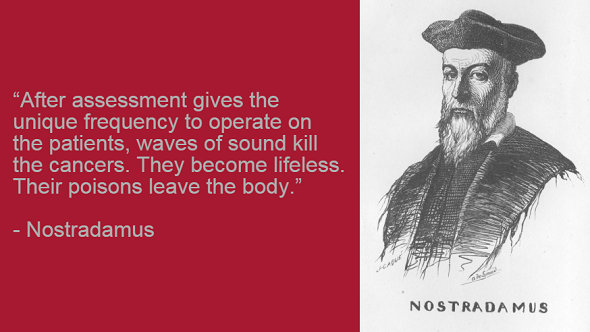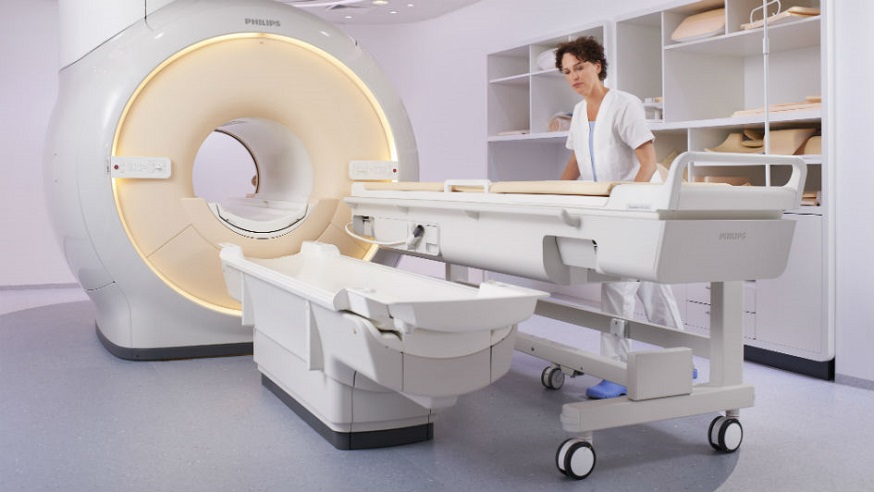
Nostradamus is famous for his predictions, mostly of tragedy. Even more tragic are the links some people try to make between what the French philosopher wrote in the 16th Century and today’s events.
Impressively, however, Nostradamus seems to have got one thing right: he predicted that sound waves would kill cancer. Here at The Institute of Cancer Research we are helping to prove that this is, in fact, true.
“After assessment gives the unique frequency to operate on the patients, waves of sound kill the cancers. They become lifeless. Their poisons leave the body.”
- Nostradamus
High-intensity focused ultrasound – or HIFU – is a non-invasive therapeutic technique that uses ultrasound energy for destroying tissue – blasting the cancer.
How? The name is self-explanatory. A high-intensity ultrasound beam is produced by an extracorporeal transducer, similar to those used for imaging, which converts electrical current to ultrasound waves. However, the high intensities and frequencies applied (100 – 10,000 Watts/cm2) allow the beam to be focused, and the energy deposited within the space of just a few millimetres inside the tumour.

At this point, biology helps physics and engineering – tissue absorbs the acoustic energy, resulting in a rapid increase in temperature. When the temperature rises above 60°C within a second, cells die by a process called coagulative necrosis.
Simple, isn’t it?
In addition to being a non-invasive technique, HIFU has the great advantage of targeting only the regions doctors recommend to be treated, while sparing adjacent tissue. And treatments can be guided by either ultrasound or magnetic resonance imaging.
That said, there is a small risk of skin burns, so careful planning is necessary, and HIFU can take a long time when treatment for large tumour masses is required.
Nevertheless, rapid heating in controlled areas does not have the severe side effects of radiation or chemotherapy, so HIFU nerds all over the world keep improving transducers and treatment planning software to make sure treatment can be delivered faster and skin burn-free.
The ICR is privileged to have been designated by the Focused Ultrasound Foundation as the second Centre of Excellence for HIFU in the world (and the first in Europe). We work on several different projects, from equipment calibration to clinical trials, to make sure we are a reference site for innovation in the field.
Professors Gail ter Haar and Nandita deSouza are working on a clinical trial whose ultimate goal is to relieve pain in patients with bone metastases. This clinical trial has been reported in the media more than once. My geeky self works on the combination of HIFU and radiotherapy, a big topic in the group at the moment, with some of my colleagues investigating the resultant biological interactions. (Meanwhile, my cool self attempts to write science blogs.)
Besides cancer ablation, the biophysical effects of HIFU can be applied in different fields of medicine, particularly neurology. The Focused Ultrasound Foundation in Virginia, US, is becoming increasingly in demand with the North American media, after a very successful clinical trial of the treatment for a condition called essential tremor, for example.
HIFU is a very promising technique and concerted efforts are being made to make it widely available in clinical practice. Mostly this is a scientific and a funding question.
The philosophical side though? The world hasn’t ended yet, and we’ve survived numerous earthquakes, so we still have some time!